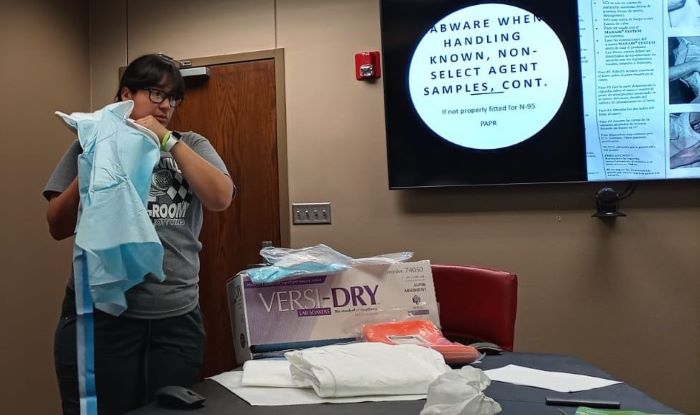Advanced Textiles Sector Needs to Engage with End-Users
The advanced textiles sector, including hygiene and medical nonwovens, needs to effectively reach out and engage with its end-user community.
Technical textiles use different fibers such as those that have functionality and those that are sustainable (cellulose-based). This technical information needs to be provided to practitioners like doctors, nurses, and laboratory personnel. In addition, disposal aspects, safe practices, and sustainability efforts by the PPE industry must be relayed to those who use them daily.
The end-user community is broad, and the industrial and trade associations in the field can help the sector with engagement and outreach. These outreach efforts will help with greater buy-ins for the nonwovens and advanced textile products.
The nonwovens and industrial textiles industry develops many products which are life savers, contribute to environmental protection, and provide jobs. The usefulness and details of the products need to be shared with the end-user community such as medical practitioners, nurses, hospital staff, emergency personnel, and others.
The outreach efforts will help with greater understanding of the characteristics and functionalities of these value-added products, resulting in greater acceptance and buy-ins by the users.
Bianca Rendon showcases PPEs used in the BSL-3 laboratory at Texas Tech. (PHOTO: Seshadri Ramkumar.)
This aspect was evident in a recent presentation in my graduate class on Fiber Forensics by Bianca Rendon, researcher with the Biosafety Response Laboratory at Texas Tech University. A BSL-3 laboratory headed by Professor Steven Presley, it was the first in Texas to undertake COVID-19 testing when the pandemic broke out in early 2020.
The presentation highlighted different nonwoven and cotton-based textiles that are used daily by the personnel in biosafety laboratories.
“PPEs are life savers,” stated Rendon, who uses different types of nonwoven-based PPEs daily when testing select and non-select biological agents.
Products such as PPEs with cotton cuffs, laminated and absorbent wipes, protective shrouds, and helmets are a few of the advanced textile products needed in medical and biological safety laboratories.
“Practitioners like me will benefit if the industry provides us with information on the structure and finish applied on the products we touch and use on a daily basis,” added Rendon.
Technical textiles found in PPEs use different structures such as woven, nonwovens, and laminates. Polypropylene fibers are commonly used in the case of nonwovens, while medical drapes and coats use blends such as cotton, polyester, and rayon.
“I understood the different structures and functionalities of fibers after attending the Fiber Forensics class, and it will be useful if the industry reaches out to actual users of the products,” emphasized Rendon.
The technical textiles sector has a lot of opportunities to penetrate different market segments by effective outreach and engagement with the daily user-community. It was evident from the discussion that the user-community is interested in using safe methods, cost effective single use products, and exploring sustainable ways and products towards use and disposal.











